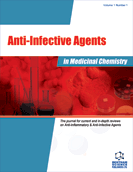Abstract
Endophthalmitis is an eye inflammation, involving the vitreous cavity and its surrounding tissues responsible for vision. In most cases, an infection triggers this inflammation. The infection can be caused by bacteria, fungi, viruses or parasites. The occurrence of this severe and devastating inflammation can be related to surgical procedures, penetrating ocular trauma, and endogenous infections. Post-operative endophthalmitis represents the most frequent event accounting for more than 70% of cases. They are schematically divided in three categories: i. acute-onset endophthalmitis (within few days from surgery); ii. delayed-onset endophthalmitis or chronic endophthalmitis (one month to years after surgery); iii. endophthalmitis related to glaucoma filtration surgery, bleb-associated endophthalmitis. This complication has been reported after both surgery breaking up the ocular integrity and external eye surgery. In the former group, secondary intraocular lens placement and pars plana vitrectomy are associated with the highest and lowest endophthalmitis rate, respectively. Because cataract surgery is the most frequently performed intraocular surgery, the 90% of post-operative endophthalmitis occurs after this surgical procedure. Clinical signs of post-operative endophthalmitis are variable in relation to the typology of the infecting agent, the level of the intraocular inflammation, and the duration of the disease. Its clinical diagnosis should be followed by the collection and culturing of aqueous and vitreous specimens; in fact, because the results of these cultures are often negative and positive, respectively, is essential to obtain specimens from both anterior and posterior ocular chambers for a proper clinical management of each patient. In the majority of cases, the infective agents of a post-operative endophthalmitis cannot be identified without any doubt, but several evidences indicate that the bacterial flora of eyelids and/or conjunctiva is the most common cause of this complication. Contaminated solutions and instruments, surgeon and operating-room personnel represent other potential sources of infection. In absence of a specific infectious condition, such as conjunctivitis, dacryocystitis and blepharitis (which should be diagnosed and treated before any intraocular surgery), the pre-operative administration of antibiotics has not been shown to reduce the incidence and/or the severity of post-operative bacterial endophthalmitis. On the contrary, numerous studies have documented that the pre-surgical application of povidone-iodine to skin and conjunctiva effectively downgrades endophthalmitis frequency. The Endophthalmitis Vitrectomy Study (EVS) has investigated about the management of post-operative endophthalmitis, considering the roles of pars plana vitrectomy and systemic antibiotics in addition to standard treatments with intravitreal antibiotic and topical or systemic corticosteroids. It demonstrated that immediate pars plana vitrectomy was beneficial for patients with very low residual vision, whereas systemic antibiotics had no effect on visual outcome or media clarity. Although EVS remains the major randomized study regarding this topic, there are some weak-points which leave its conclusions open to future modifications. Particularly, in the EVS cluster: i. the fourth-generation fluoroquinolones – characterized by a better efficacy profile in comparison with ceftazidime and amikacin – have been not tested; ii. only cases of acute-onset endophthalmitis – typically caused by coagulase-negative micrococci – were enrolled, resulting in a lack of data about the delayed-onset and bleb-associated endophthalmitis. For these reasons, the EVS outcomes should not be generalized to all forms of endophthalmitis, which could potentially benefit utilizing different or additional therapeutic approaches.
Keywords: Endophthalmitis, eye inflammation, Endophthalmitis Vitrectomy Study (EVS), coagulase-negative micrococci, fluoroquinolones
 15
15





















